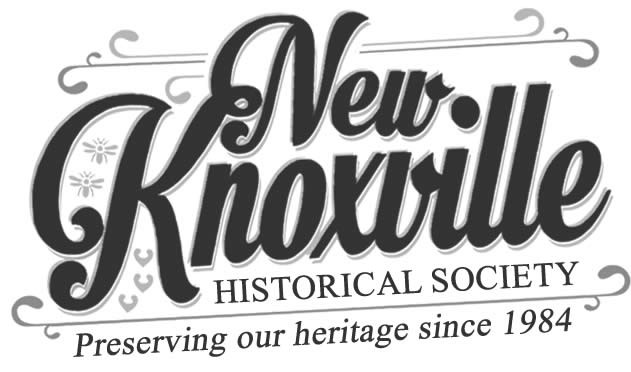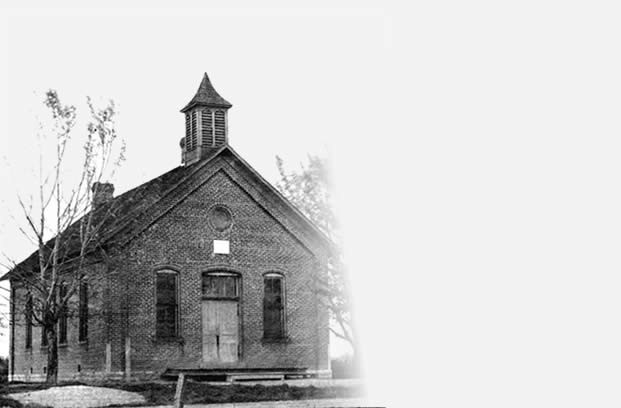August Kuck, R. R. 1, Botkins, Recalls How Farmers Planted and Harvested Crops in Days Before Machinery; 82 Year Old Native Auglaize Countian Thinks Young People are Better than They Were
Published in the Evening Leader in 1957
Editor’s Note: August Kuck, of Botkins R. R. 1, 82 year old native Auglaize Countian, recalls how farming was done in the days before tractors, combines, hay balers, and many other machines which have speeded the harvesting processes. Mr. Kuck resides now with his son, Elmer Kuck on Botkins R. R. 1. He has written here “The Good Old Days” memories of early days on the farm.
By August Kuck
R. R. 1, Botkins
April 2, 1957
I will try and write a little about the good old days and the method of farming. I was born in 1875 in Auglaize County, Ohio, on the E. R. Kuck farm. My father and Herman Meckstroth owned a tile factory. The factory stood right where Robert Kuck’s residence now stands, these tile were made by horsepower and these tile were dried in a kiln with wood for fuel. That same year they bought one hundred acres of land in Shelby County, where Lewis Kipp now lives. This was solid timber and they started clearing to make fencerails, wood to burn to make their tile, and build some buildings, a two story log house, a log hoghouse, and a few other buildings made of sawed timber.
In 1878, they dissolved partnership, my parents taking the farm and Meckstroth, the tile factory. That fall we moved to this place with a few little fields cleared. Here is where the good old days started. In those days they did not have much machinery, a plow, a spike tooth harrow, a home made roller, and a little plow that was used for odds and ends.
We had a plow called Jumper. It had a cutter that would be an inch below the plow point so the point wouldn’t go under the roots. If we had ten acres plowed we had about seven acres of ground and three acres of stumps. This ground was then marked crossways with that little plow, then planted to corn with hand planters. This corn was cultivated with one horse with a two shovel plow. By the 4th of July, the corn was laid aside, and those that had wheat, started to harvest their crop. This was cut with a cradle, then raked with a hand rake and tied by hand, later stacked and thrashed. About two or three years later, my folks bought a Dodge, oh no, not an automobile, but a grass mower, a four foot cut with a self rake attachment. This would rake the bundles off the platform saving a lot of time. Then some years later the binder came out. The frame of these binders was all wood, and the driver would sit six feet from the ground. Now about making hay, the first few years there was no clover so they sowed millet for the horses. This was made after harvest. Later, when they had clover, that was made before harvest, all turned by hand with forks to dry, and forked on the wagons the same way. Later, came the loaders, then the buckrake, baler, and chopper.
Now to get ready for thrashing, we had to haul the manure out of the cowlot, which could not be done in the spring, because the corn stalks were not rotted enough to haul out, it was hauled in piles in the field to be spread later. Now for the thrashing, it took about twenty men besides the thrashing crew, one to take care of the engine, two to change about, feeding and tending to the separator and one water boy. The straw would drop right out the back of the machine and took two men to work it back and so on by ten other men to make the stack in the cow lot. A few years later they came out with a swinging stacker, saving four men, then the blower came out, saving seven or eight men.
Now came corn cutting time, this was done by hand. The shocks were tied with Lynn bark, they would saw down a tree eight to ten inches thick, take off the outer bark, the inner bark was then split in layers the thickness and length wanted. Later the corn was chucked by hand, some fodder tied in bundles, and some shocked loose. Soon came the shredder and now the picker.
Now the livestock, everybody had horses of all descriptions. The cattle mostly were grade Shorthorn even in these early days. The milking was all done by hand, the milk strained in crocks and in a few days the cream was skimmed off, churned to butter, and in the evening we would set a crock of this thick milk on the table to eat. In those days, this was as good to us as your ice cream is today to you.
Now the hogs, we had two breeds of hogs in those days. They were the Elm peelers and the Razor backs. Both could nearly reach the second row of corn through the rail fence. It took from twelve to eighteen months to get these hogs ready for market, and they had to be slaughtered as there was no market for live hogs. There was a large warehouse in Lock Two where you could sell your hogs. I do not know whether they were worked up over there or shipped to some other place.
Now the chickens, we had a henhouse ten by twelve feet, no windows, roosts were eight feet from the ground. There were no eggs in the winter, and only a few in the spring.
In those early days we had no screen doors or screens on the windows, and a custard pie from a distance would look like a raisin pie. Well, we lived through it with all those germs we ate. We had no carpet or rugs on the floors so you can imagine the racket six to eight children would make playing tag or some other game with their wooden shoes on their feet on this bare floor. We children would get very little sweets. I do not think the average family would use one hundred pounds of sugar in a year. We had no breakfast cereal of any kind. The woman would do all the sewing for men, women and children till they were about fifteen years of age. They also would do all the baking, and do a lot of outside work. We had no school laws and the children would stay home at least one half of the school period. I know, I got through the fourth grade and that was the end of my school days.
Now for game to hunt, we had wild turkey, Duefkin Hoener (timber partridge), fox and gray squirrels, rabbits, quail, they were later put on the song bird list, but now they are on the game bird list again but protected and I hope they will stay there for a long time to come.
Now a few words to you young people, don’t let anyone tell you that you are worse than we were years ago, because you are not. I think you are even better than we were, of course you have more opportunities to get around than we did. We had to walk, on Sunday evenings boys and girls would walk to church, after church we would make our dates if we wanted to have a date, we would walk from three to ten miles after church time if we made a date. If we wanted to be back by one o’clock we sometimes had to go in high gear as there were no speed laws we would sometimes go in a lively trot for a few miles to get home a little earlier.
So much for that and so much for the whole works. Those were the good old days, as we did not have them any better, and did not know any better and were as happy as you are today with better times to come.
Yours respectfully
August H. Kuck


